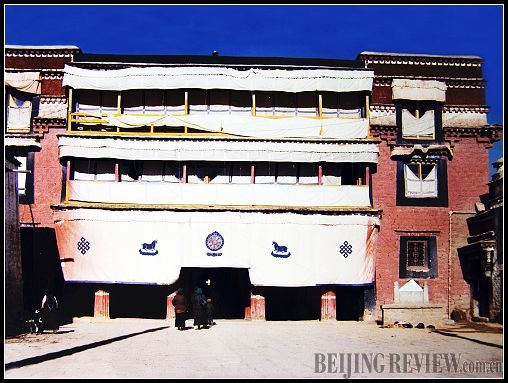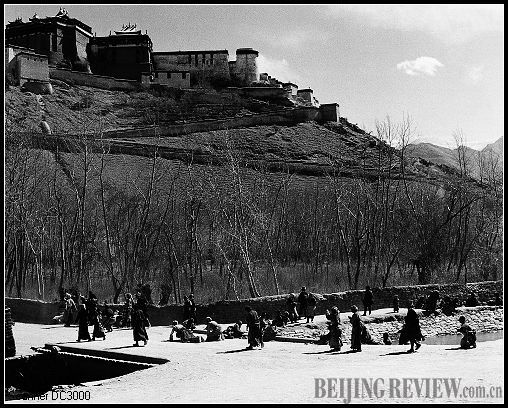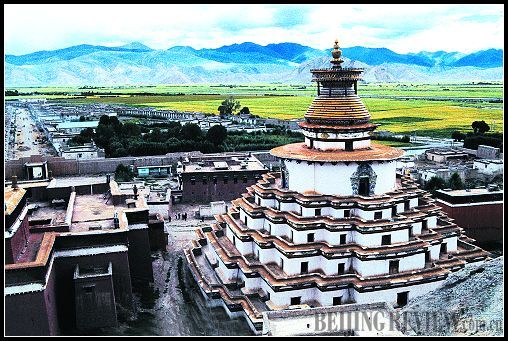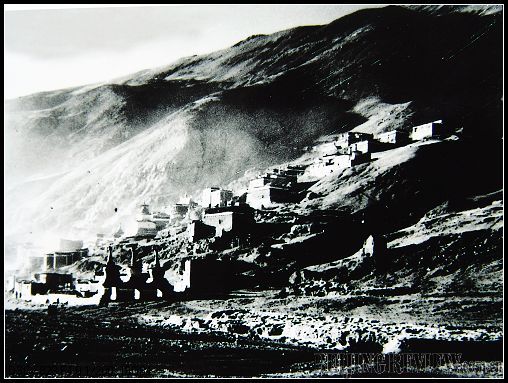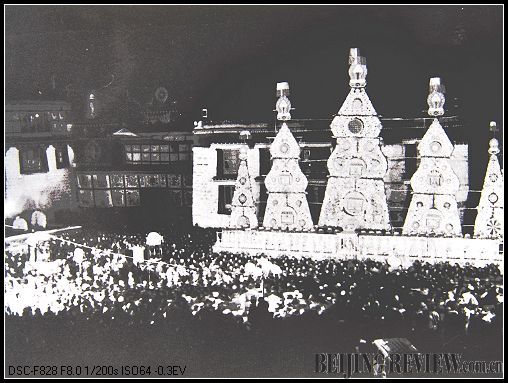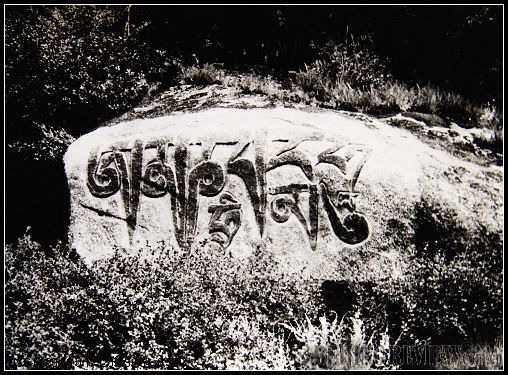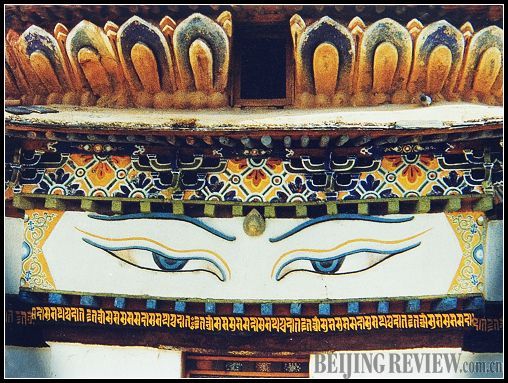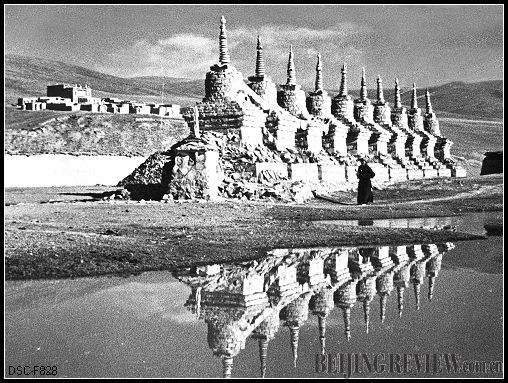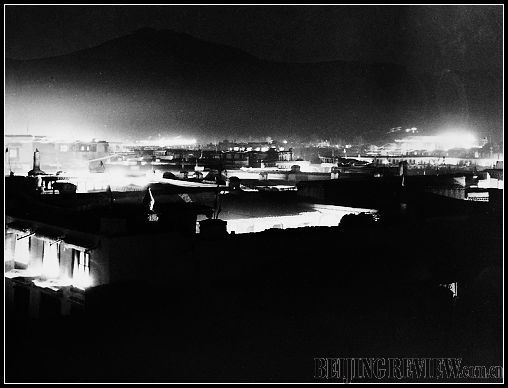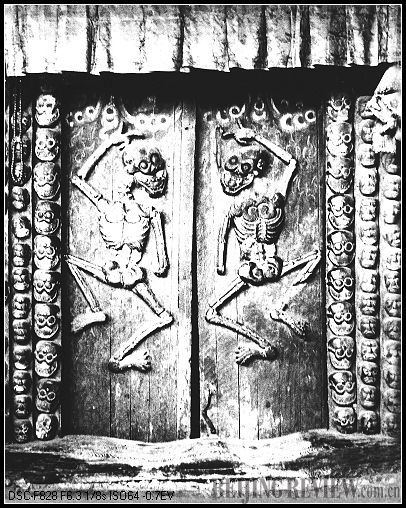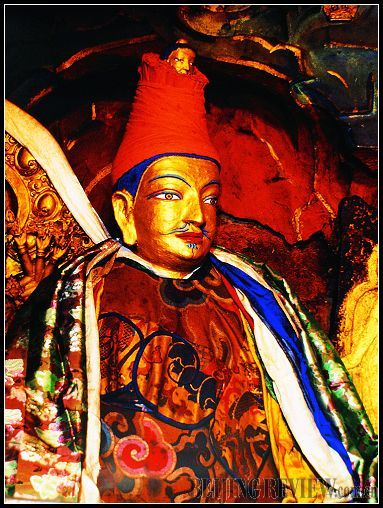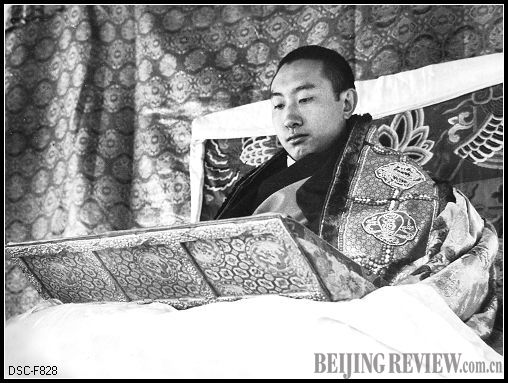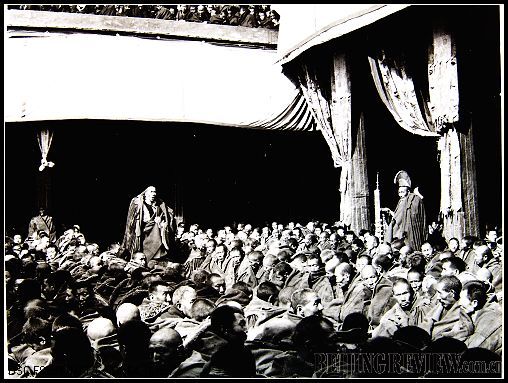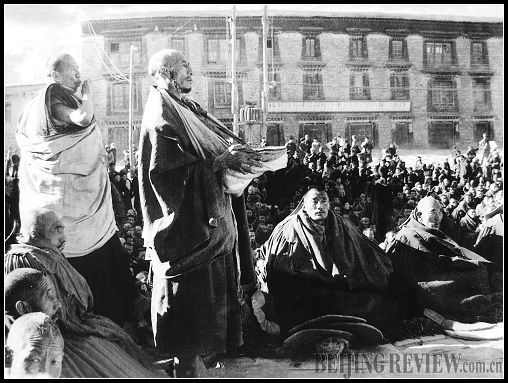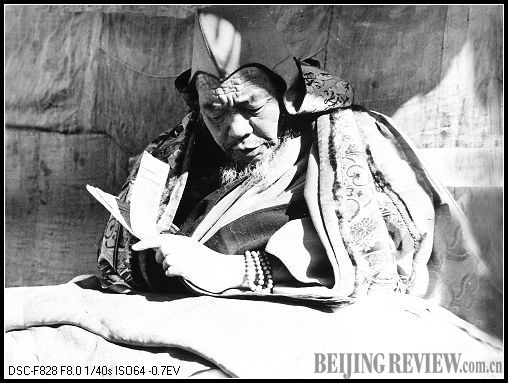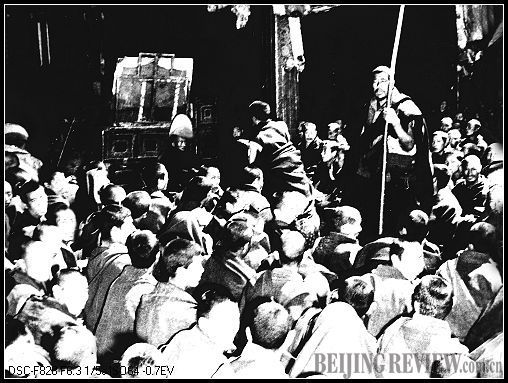Ramoche Monastery
The Ramoche Monastery, called "Gyada Romo Chinhzol Lhakang", means "the sutra collection monastery changed from Han Tiger God
Pilgrims
Pilgrims kowtow and offer prayers around the Potala Palace (1956)
Ten-thousand Buddha Stupa
The Pelkor Chode Stupa (Ten-thousand Buddha Stupa) in the Palchoi Monastery is well-known in Tibet. Built in 1436, the "Ten-thousand Buddha Stupa" is also called "Auspicious Multi-Door Stupa", or White Stupa for short. The 14-storeyed stupa with a total height of 42.2 meters is comprised of the base, paunch, vase of treasure, umbrella and banner, narrower towards the top. Covering 2,200 square meters, the stupa has 108 doors and 76 shrine halls with over 100,000 statues of Buddha. The stupa is a well-preserved combination of architecture, sculpture and painting art, featuring a unique style and is a major monument in the art history of Tibet. Exclusive in China, it is a cultural relics unit under key protection in the Tibet Autonomous Region (1957)
Northern Sagya Monastery
The Northern Sagya Monastery (1957). It was built by Khon Khonchog Gyalpo at the foot of the Bonbo Mountain by the Drongchu River in Xigaze. He acted as the host of the monastery and imparted dharma there for close to 30 years, laying a foundation for the formation and development of the Sagya Sect. Later, it was passed on to Konggar Gyaincain (1182-1251), who enjoyed high prestige over a wide area and was called "Sagya Pandit (referring to a great scholar)". With the prospering of the sect and due to the backing of the Central Government of the Yuan Dynasty (1279-1368), the political center of Tibet moved westward to Sagya
Butter Sculpture Lantern Festival
Butter Sculpture Lantern Festival
Cliff Carving
The cliff carving of "Six-Syllable Prayer" found near the Pobangka Monastery (1978)
Eyes of Wisdom
A pair of three-meter-long "eyes of wisdom" found in the middle of the vase of treasure and on the door mantles of the shrine halls of the Ten-thousand Buddha Stupa in Gyangze. It is said to originate from the Siva of Hinduism: the eyes of the god could perceive all the good and evil behaviors in the world (1990)
Stupa
The Eight-Auspicious-Symbols Stupa in Nagqu Town (1956)
Lantern Festival
The Lantern Festival in Lhasa (1957). Called "Gardain Ngaqu"in Tibetan, it falls on the 25th day of the tenth month of the Tibetan calendar. The day is said to coincide with the enlightenment of Zongkapa, so believers light butter lanterns on the roofs and in front of the windows of their houses to commemorate him and pray for blessings. At that time, Lhasa had no access to power, but every household ignited the butter lanterns, making the whole city brightly lit
Wood Carving
The wood carving on the gate of the Bamo Hall of the Northern Sagya Monastery: Masters of Sitavana (1957)
Statue of Songtsan Gambo
The statue of Songtsan Gambo in the Potala Palace (1978). Buddhism has a history of some 2,000 years in China, exerting profound influence. After the 5th century, Buddhism began to spread to Tibet. However, it was formally introduced to Tibet during the reign of Songtsan Gambo from India and Han-inhabited areas. He married Princess Khir-btsun from Nepal and Princess Wencheng of the Tang court; each of them brought a Buddhist statue to Tibet. The Jokhang Monastery and the Ramoche Monastery were built in Lhasa
10th Panchen Erdeni
The 10th Panchen Erdeni giving a lecture on sutras in the Tashilhungpo Monastery (1957)
Grand Summons Ceremony
The annual Grand Summons Ceremony begins from the second day of the first month of the Tibetan calendar. In 1957, the "Shi'o" disciplinarian of Zhaibung Monastery, on behalf of the Khampo of the three major monasteries, declared in the Jokhang Monastery to take over power in Lhasa City over major issues for 21 days (1957)
Leading Buddhist Sutra Chanter
The picture shows the prayer meeting ritual held at "Sumchori" Square south of the Jokhang Monastery (1957). The Cochin "Wenche" (the leading Buddhist sutra chanter) of the Zhaibung Monastery leading monks to chant sutras. They should chant sutras six times daily. The leading sutra chanters all have received special training so that their voices were extremely sonorous, like those of the bass cantors in the chorus
Gandain Chipa
The Gandain Chipa is the overall abbot of the Gelug Sect of Tibetan Buddhism. Tubdain Kungar was the 96th abbot of the Gandain Monastery after Zongkapa and Chairman of the Tibet branch of the Buddhist Association of China. In the picture, Gandain Chipa Tubdain Kungar delivers a sermon at the square of the Jokhang Monastery (1957)
Geshi Degree Examination
The Geshi degree examination held in the Jokhang Monastery (1957)
